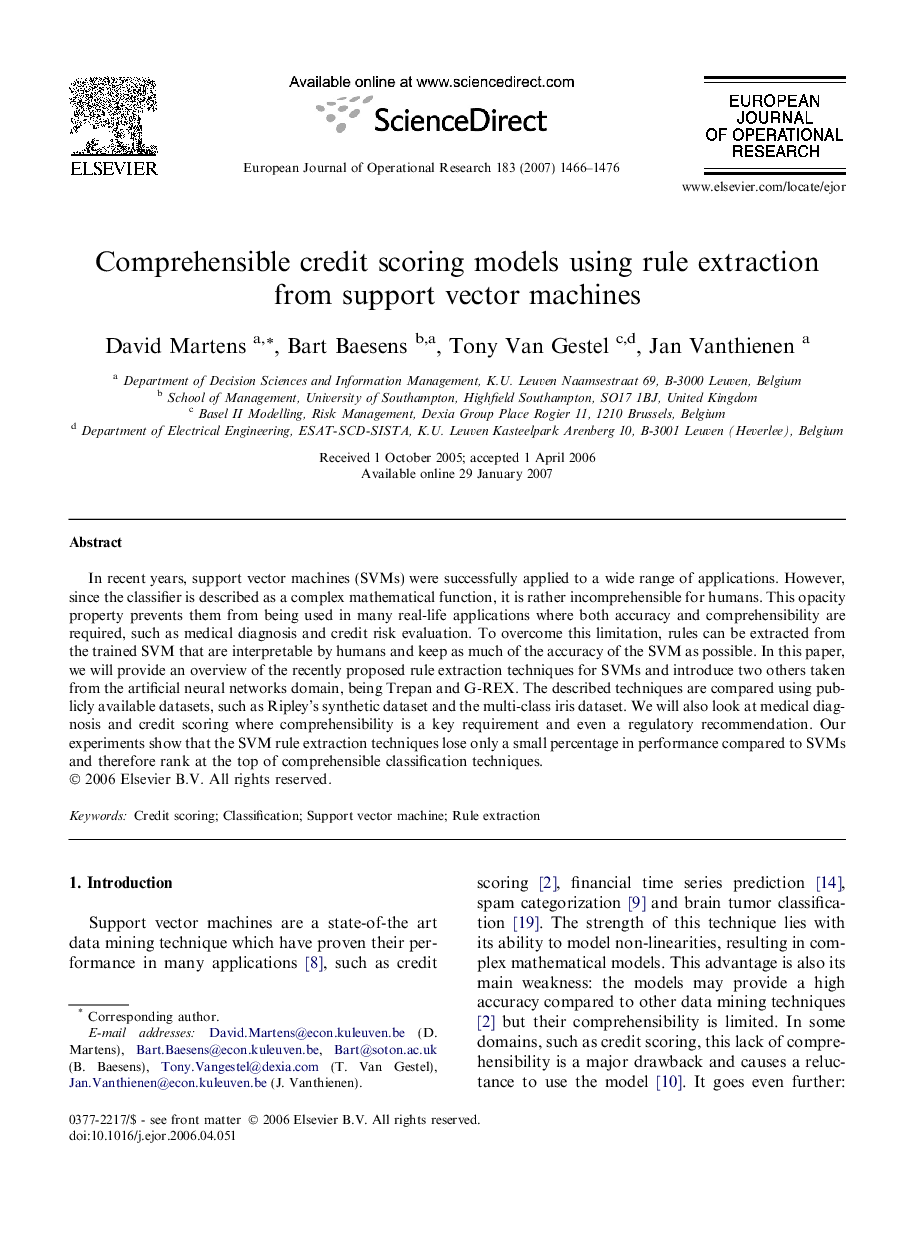| Article ID | Journal | Published Year | Pages | File Type |
|---|---|---|---|---|
| 481828 | European Journal of Operational Research | 2007 | 11 Pages |
In recent years, support vector machines (SVMs) were successfully applied to a wide range of applications. However, since the classifier is described as a complex mathematical function, it is rather incomprehensible for humans. This opacity property prevents them from being used in many real-life applications where both accuracy and comprehensibility are required, such as medical diagnosis and credit risk evaluation. To overcome this limitation, rules can be extracted from the trained SVM that are interpretable by humans and keep as much of the accuracy of the SVM as possible. In this paper, we will provide an overview of the recently proposed rule extraction techniques for SVMs and introduce two others taken from the artificial neural networks domain, being Trepan and G-REX. The described techniques are compared using publicly available datasets, such as Ripley’s synthetic dataset and the multi-class iris dataset. We will also look at medical diagnosis and credit scoring where comprehensibility is a key requirement and even a regulatory recommendation. Our experiments show that the SVM rule extraction techniques lose only a small percentage in performance compared to SVMs and therefore rank at the top of comprehensible classification techniques.
